Moderately strong M5.4 solar flare erupts from Region 3256
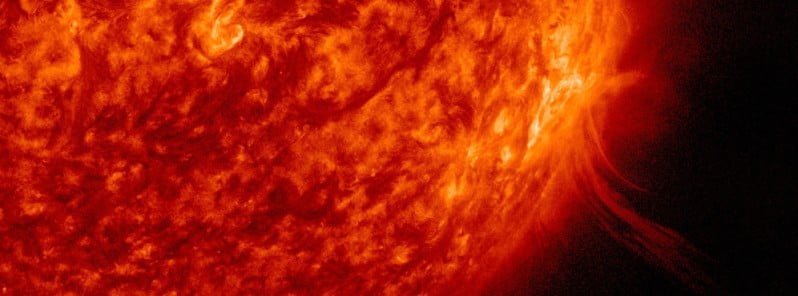
A moderately strong M5.4 solar flare erupted from Active Region 3256 at 07:37 UTC on March 30, 2023. The event started at 07:24 and ended at 07:43 UTC.
A Type II radio emission with an estimated velocity of 369 km/s was detected at 07:35 UTC. Type II emissions occur in association with eruptions on the Sun and typically indicate a coronal mass ejection (CME) is associated with a flare event.
In addition, a Type IV radio emission was detected at 07:39 UTC. Type IV emissions are typically associated with strong CMEs and solar radiation storms.
Radio frequencies were forecast to be most degraded over the Middle East, India, east Africa, Madagascar, and the Indian Ocean at the time of the flare.
The location of this region does not favor Earth-directed CMEs. The region will start its farside rotation over the next 48 hours.
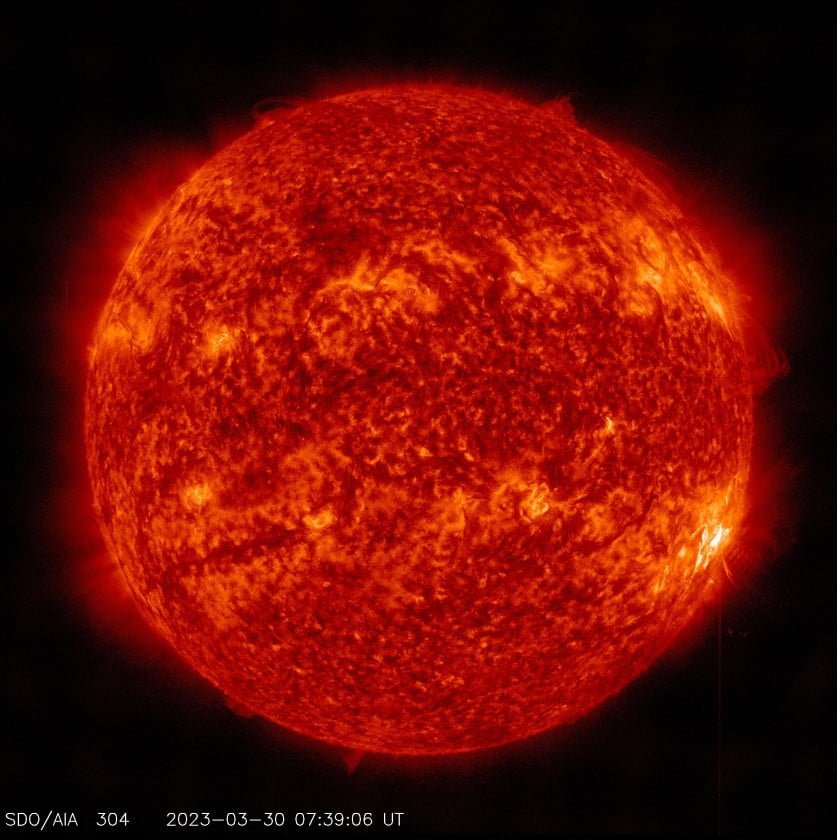
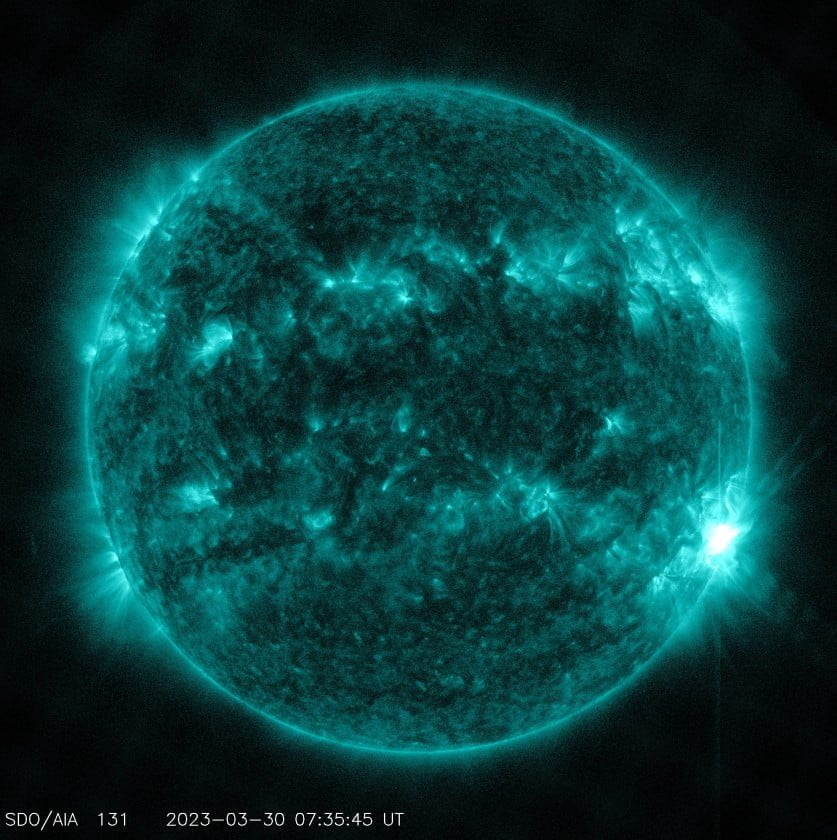
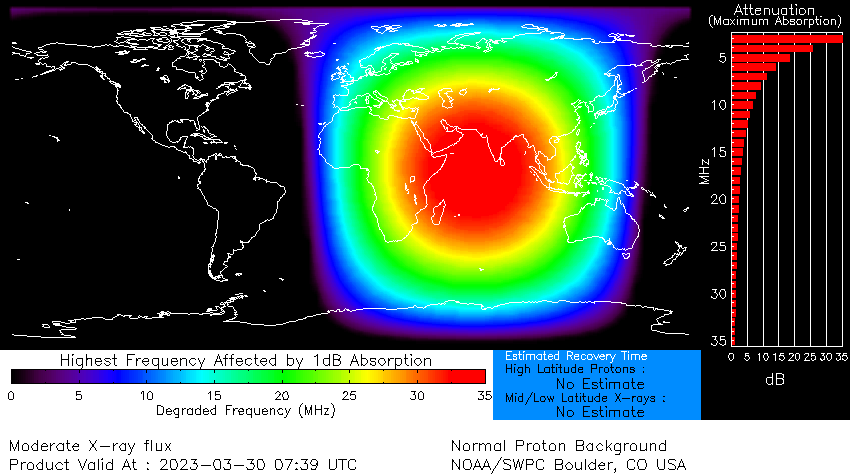
The same region produced an X1.2 solar flare at 02:33 UTC on March 29. The CME it produced was modeled and determined to be well ahead of Earth’s orbit.1
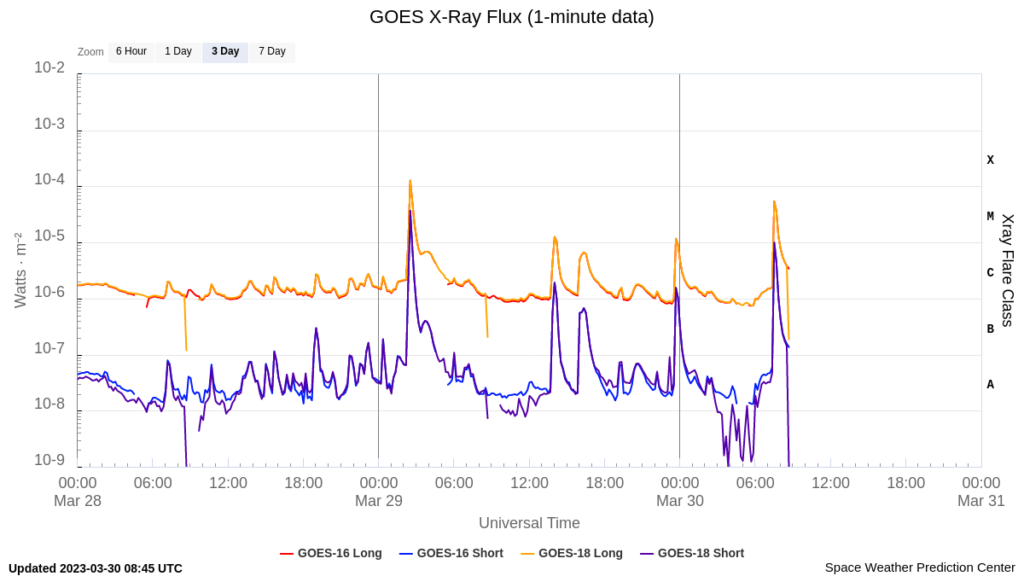
Solar activity is expected to be low with a chance for M-class flares and a slight chance of X-class flares on March 30 mainly as a result of Region 3256’s flare history. Region 3256 will rotate to and beyond the limb by March 31 / April 1 and only a slight chance of M-class flares is forecast.
Solar wind parameters in 24 hours to 00:30 UTC today were mostly at background levels but the IMF remained slightly enhanced. Total field strength was steady around 6 nT until midday when it increased and remained nearer to 9 nT. Bz only underwent brief and minor southward excursions. Wind speeds were generally at 400 km/s or less, although readings have been less reliable with the low density environment. The phi angle was oriented in a negative solar sector.
The geomagnetic field was at quiet levels.
Mostly quiet levels are expected first half of March 30. Unsettled to active conditions are expected starting midday on March 30 through April 1 with the onset of a negative polarity coronal hole high speed stream. There is also a chance for G1 – Minor geomagnetic storms through April 1 with this activity.
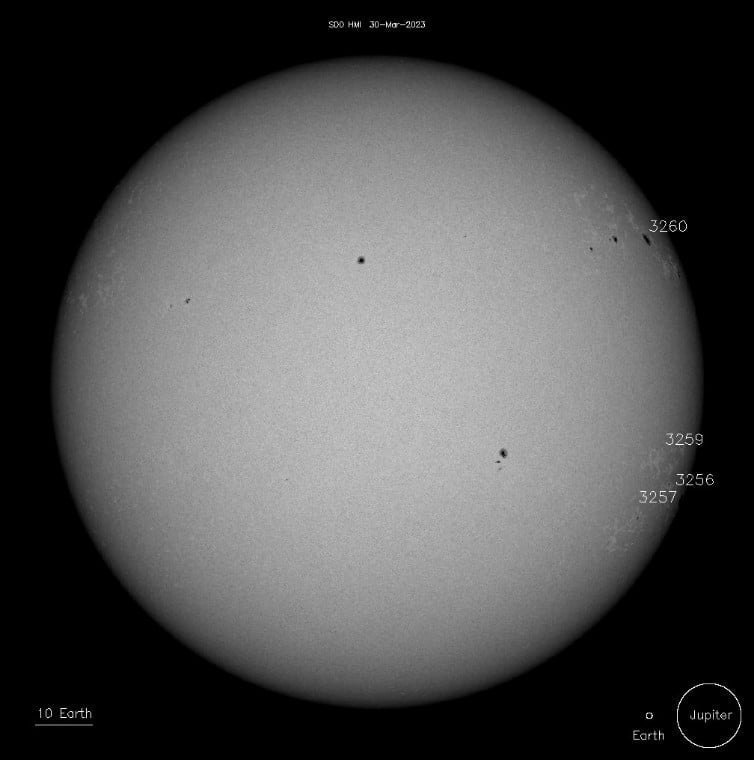
References:
1 Forecast Discussion – Issued: 2023 Mar 30 0030 UTC – Prepared by the U.S. Dept. of Commerce, NOAA, Space Weather Prediction Center
Featured image credit: NASA SDO/AIA 304

Commenting rules and guidelines
We value the thoughts and opinions of our readers and welcome healthy discussions on our website. In order to maintain a respectful and positive community, we ask that all commenters follow these rules:
We reserve the right to remove any comments that violate these rules. By commenting on our website, you agree to abide by these guidelines. Thank you for helping to create a positive and welcoming environment for all.